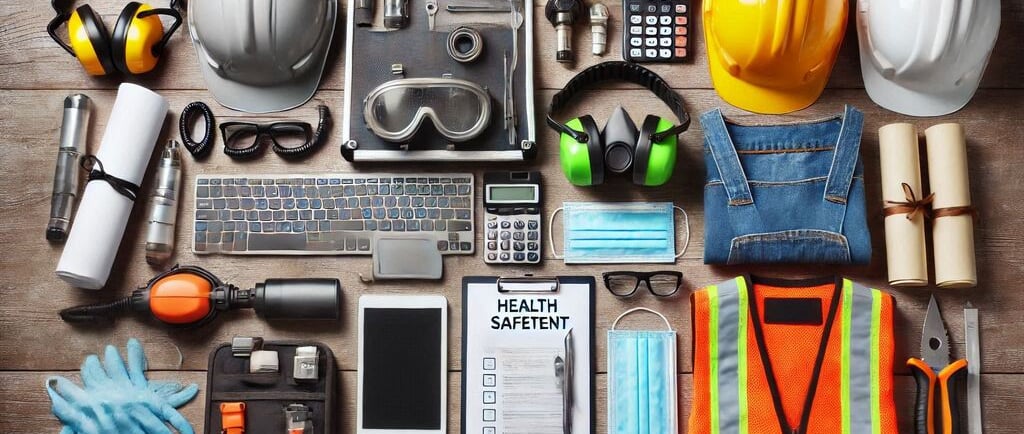Let us collaborate to foster global growth and development together.
A Comprehensive Guide to Choosing the Right Health & Safety Equipment
Learn how to choose the right health & safety equipment with this comprehensive guide. Practical tips, expert advice, and key considerations to ensure workplace safety.
10/31/20243 min read


A Comprehensive Guide to Choosing the Right Health & Safety Equipment
Meta Description:
Learn how to choose the right health & safety equipment with this comprehensive guide. Practical tips, expert advice, and key considerations to ensure workplace safety.
Introduction: The Importance of Choosing the Right Equipment
In today’s workplace, ensuring the safety and well-being of employees is not just a legal requirement but a moral obligation. The right health & safety equipment plays a crucial role in creating a safe environment. From personal protective equipment (PPE) to advanced monitoring tools, selecting the right gear can minimize risks and boost productivity. But with so many options available, how do you choose the right tools? Let’s dive into this comprehensive guide to help you make informed decisions.
Understanding the Basics of Health & Safety Equipment
Before we delve into the specifics, it's essential to understand the categories of safety equipment available. Health & safety equipment generally falls into the following categories:
Personal Protective Equipment (PPE): Items like gloves, helmets, goggles, and masks.
Monitoring Devices: Equipment like gas detectors or noise level monitors.
Emergency Tools: Fire extinguishers, first aid kits, and eye wash stations.
Ergonomic Aids: Equipment designed to prevent musculoskeletal disorders, like anti-fatigue mats.
Knowing the type of equipment your workplace needs is the first step toward ensuring safety.
Assessing Workplace Hazards
Every workplace has unique hazards. Understanding them is critical to selecting the right health & safety equipment. Conducting a thorough risk assessment can provide valuable insights. Here are some tips:
Identify Potential Hazards: Look for physical, chemical, and ergonomic risks.
Evaluate Job Roles: Different tasks may expose employees to different risks.
Consult Employees: Workers can provide first-hand information about specific dangers they face.
By assessing hazards, you can create a targeted approach to equipping your team.
Key Features to Consider When Selecting Equipment
When evaluating safety equipment, it's essential to consider these key features:
Compliance with Regulations: Ensure the equipment meets legal standards. For example, OSHA standards in the U.S. or ISO certifications globally.
Durability and Quality: Opt for products made with high-quality materials to withstand tough conditions.
Comfort and Fit: Ill-fitting equipment can be uncomfortable, discouraging usage. Offer a variety of sizes to accommodate all employees.
Ease of Maintenance: Equipment should be easy to clean and maintain for long-term usability.
Cost vs. Value: While budget constraints are important, never compromise on safety by choosing cheaper alternatives.
Commonly Used Health & Safety Equipment by Industry
Different industries require specific safety gear tailored to their unique needs:
Construction: Hard hats, steel-toed boots, and harnesses.
Manufacturing: Hearing protection, safety glasses, and cut-resistant gloves.
Healthcare: N95 masks, face shields, and disposable gloves.
Laboratories: Lab coats, chemical splash goggles, and fume hoods.
Understanding your industry’s needs ensures the chosen equipment aligns with workplace demands.
Training and Employee Awareness
Even the best equipment is useless without proper training. Employees should know how to use safety gear effectively. Here’s how to implement an effective training program:
Regular Workshops: Schedule periodic sessions to update employees on the latest equipment.
Hands-On Demonstrations: Show workers how to wear and maintain their gear.
Feedback Mechanisms: Encourage employees to share their thoughts on the equipment’s usability.
Investing in training not only enhances safety but also ensures compliance with regulations.
Tips for Maintaining Health & Safety Equipment
Proper maintenance prolongs the life of safety equipment and ensures it works effectively. Follow these tips:
Create a Maintenance Schedule: Regularly inspect and service equipment.
Document Inspections: Keep records of maintenance checks for compliance purposes.
Replace Damaged Equipment Promptly: Broken gear can be hazardous.
Stock Up on Replacements: Always have backup equipment available in case of emergencies.
Real-Life Example: Enhancing Workplace Safety in Manufacturing
Consider a medium-sized manufacturing facility that improved its safety record by investing in advanced noise-canceling ear muffs and ergonomic tools. Employees reported fewer instances of fatigue and hearing loss. Moreover, incorporating gas monitors reduced the risks of undetected leaks, fostering a safer working environment.
This example highlights the importance of tailored safety solutions for specific industries.
Conclusion: Prioritizing Safety in the Workplace
Choosing the right health & safety equipment requires careful planning, thorough hazard assessments, and an understanding of regulatory requirements. By focusing on quality, employee training, and regular maintenance, you can create a safer and more productive workplace.
Start your journey toward a safer work environment by assessing your current setup. Have questions or tips to share? Leave a comment below or explore our related articles for more insights.
Innovation
Cutting-edge solutions for industrial efficiency and productivity.
© 2024. All rights reserved.


